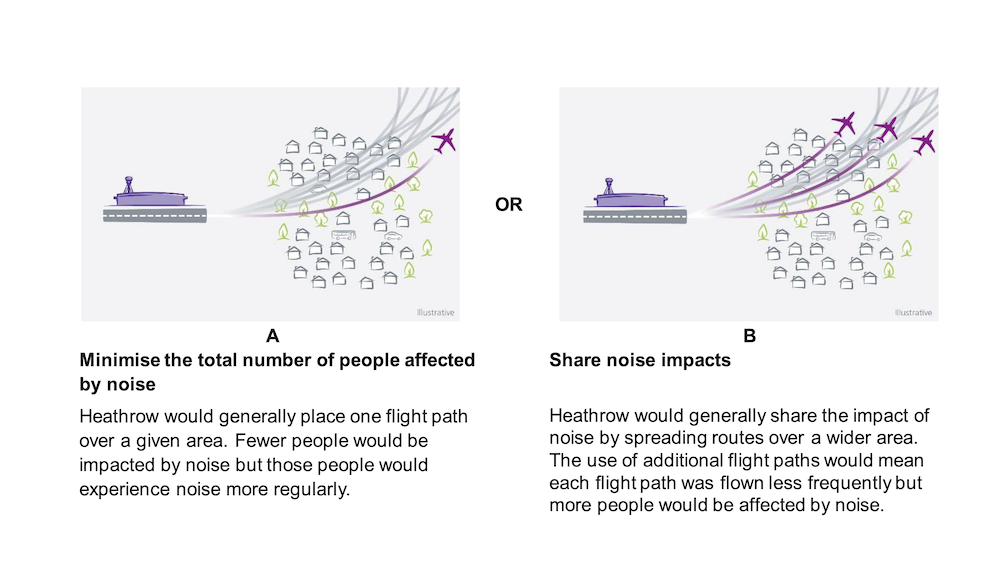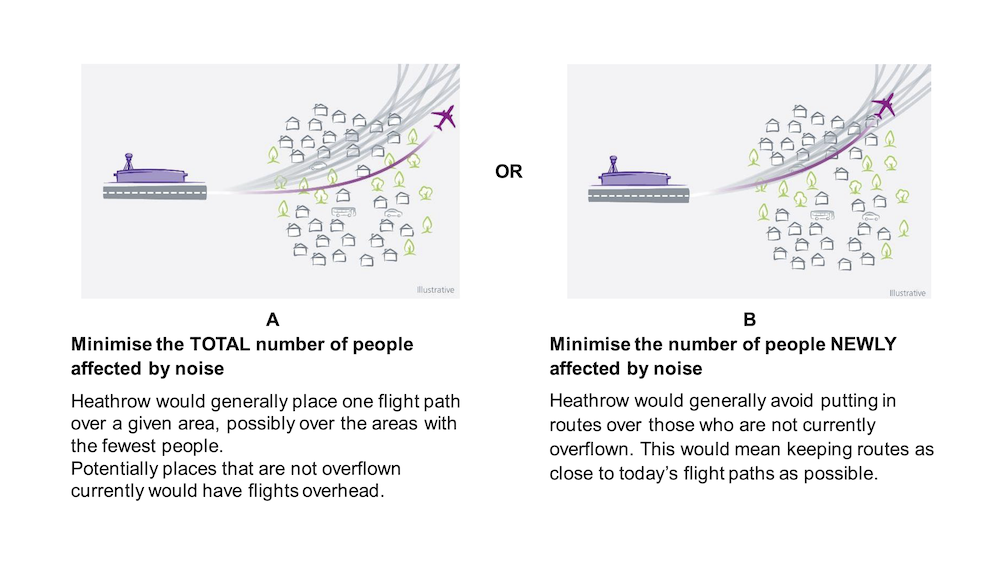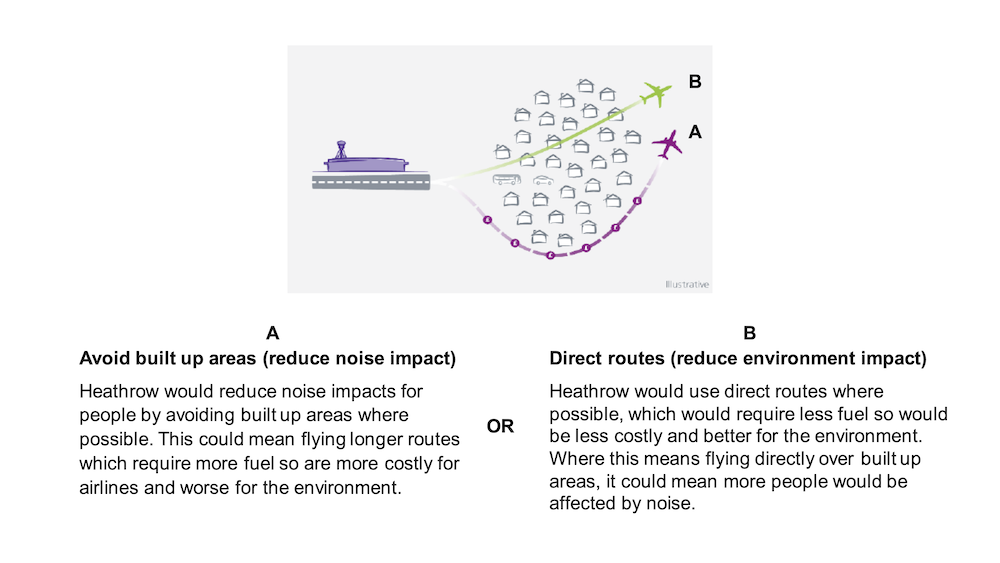Airservices Australia and Brisbane Airport Corporation want as many planes in the air over Brisbane as possible because this is how they make money. BFPCA has been calling for a curfew and flight cap since the beginning, but all Airservices and BAC have offered to do is spread the noise over more neighbourhoods like yours. We do not want this and we need your help to stop it from happening.
Sydney Airport (Australia’s busiest and richest) has a curfew and a flight cap, and we think our homes and our kids are just as important as those living in Sydney. In fact, Adelaide, Essendon, and Gold Coast airports have a curfew, too. We want the same community protections.
Read on to find out more about what noise sharing is and how you can help us get a curfew and flight cap instead.
- Do you want to live in Brisbane Airport’s noise sewer?
- BFPCA’s position on noise sharing
- What is noise sharing?
- Concerned about noise sharing? This is what you can do.
Do you want to live in Brisbane Airport’s noise sewer?
Nobody wants to be exposed to excessive flight path noise pollution from frequent, loud and low-flying aircraft. Yet, this is already the reality for thousands of families and communities affected across 169 suburbs of Brisbane.
With the launch of Brisbane Airport’s New Parallel Runway on 12 July 2020 came a new airspace and set of flight paths that concentrate aircraft noise over densely populated residential areas. The noise pollution stretches from inner-city suburbs such as Hamilton, New Farm, Ascot, Balmoral, Bulimba, Hawthorne to bay-side suburbs including Redcliffe and Wellington Point as well as inland rural areas some 35 km away from the airport such as Upper Brookfield, Pullenvale and Samford Valley.
Brisbane Airport and Airservices Australia sold this project to Brisbane communities suggesting the New Parallel Runway will enable them to prioritise “over water” operations. The CEO Gert-Jan de Graaff is on the record saying, “The net effect of aircraft flying over the city will decrease.”
As it turns out, Brisbane communities were duped, deceived, misled and lied to. This has now been confirmed by three independent entities: the Aircraft Noise Ombudsman, the Brisbane Airport PIR Advisory Forum, and UK-based airspace design consultants TRAX International who reviewed Airservices’ dodgy handiwork and found it failed to implement world’s best practice noise abatements.
On 21 Oct 2022, Airservices released its Brisbane New Parallel Runway Flight Paths Post Implementation Review (PIR) Draft Report, which confirms that they have now already adopted the TRAX recommendation to “develop and assess options for change proposals to introduce noise sharing” (p. 21).

BFPCA’s position on noise sharing
To start with, BFPCA’s position is clear: We will entertain and consider noise sharing only after all other available avenues for genuine net reductions of aircraft noise have been exhausted. This includes the community’s eight key demands that are based on existing legislation and protections already afforded to other communities across Australia such as Sydney, Melbourne, Gold Coast, and Adelaide. However, Brisbane Airport and Airservices are not yet willing to make ANY compromise or sacrifice of their intended growth trajectory that is aiming for 110 flights an hour.
Noise sharing can potentially be part of an overall noise abatement strategy, but it is NOT the one go-to fix that Airservices make it out to be, and it is NOT a one-size-fits-all solution because it is controversial and divisive. Yes, it can offer positive benefits such as a temporary reduction in noise experienced by some communities or short periods of respite. But it can also backfire, for example when Brisbane Airport just uses this as a carte blanche to increase their capacity unchecked by pushing even more flights across a greater number of flight paths available to them.
Think of Brisbane Airport’s excessive noise pollution like noise sewage. Nobody wants to live in Brisbane Airport’s noise sewer. So, the first priority must be noise avoidance and noise minimisation at the source before we consider noise sharing and other measures in parallel.
What is noise sharing?
This video provides an explanation of what noise sharing is and the hidden risks and consequences:
This is perhaps best explained by looking at what noise sharing is NOT. In his October 2021 report, the Aircraft Noise Ombudsman (ANO) criticised BAC’s deceptive community engagement based on misleading “talking points” provided to them by Airservices. One talking point was, “The current number of aircraft movements will be distributed across two runways.” – This is not a genuine noise sharing approach. This is the airport doubling its capacity from 52 to now 110 flights an hour.
So what is noise sharing really, and how can noise sharing be used in a more genuine manner that is of benefit to communities? Both Sydney and Heathrow Airports may be useful examples that Brisbane communities can learn lessons from, but they also prompt caution.
The Sydney example
At Sydney Airport, noise sharing is one of its many noise abatement strategies. The Sydney Airport Long Term Operating Plan (LTOP) is the “program which has been introduced to manage the aircraft noise associated with Sydney Airport. It was drawn up through a major consultative process during 1996 and 1997. The Plan is designed to ensure that aircraft movements are maximised over water and non residential land. Where overflight of residential areas cannot be avoided, the Plan aims to safely share the noise between communities.” The LTOP governs the way the use of the runways at Sydney Airport is being varied to produce different combinations of flight paths affecting different parts of Sydney. Read more about the Sydney LTOP here.
The Heathrow example
Heathrow Airport in the UK has been engaging communities in its airspace modernisation programme to introduce something Brisbane has already: PBN – Performance Based Navigation. Rather than using ground-based radio beacons, PBN uses satellite technology to direct aircraft to follow a route more precisely. This leads to routes becoming narrower and thus resulting in noise concentration – sounds familiar? However, PBN – and other aviation tech lingo being used such as RNP (Required Navigation Performance) and GBAS (Ground Based Augmentation System) – can also be used to offer alternative flight paths that can be switched on and off to provide areas overflown with periods of respite from aircraft noise. However, when looking at Heathrow Airport, keep in mind that it is a land-locked airport and not adjacent to the ocean like Brisbane Airport is offering wide open space to fly over water.
As part of their engagement, Heathrow wanted to hear directly from local communities, and they presented communities with a number of trade-offs for consideration that toss up the accuracy that PBN offers with flexibility it can provide:
1. (A) Minimise the total number of people affected by noise VERSUS (B) Share noise impacts

2. (A) Minimise the TOTAL number of people affected by noise VERSUS (B) Minimise the number of people NEWLY affected by noise

3. (A) Avoid built up areas (reduce noise impact) VERSUS (B) Direct routes (reduce environmental impact)

Source of images: Heathrow Airport
Concerned about noise sharing? This is what you can do.
- Follow and support BFPCA. We are a community organisation representing all people across Brisbane negatively affected by the excessive noise pollution from Brisbane Airport’s flight paths. We welcome those concerned about future flight path changes and plans for noise sharing to join our fight. Sign up to our newsletter here. You can also follow us on Facebook and Twitter.
- Complain. Airservices is famous for its failures to genuinely engage communities and provide accurate and truthful information. So far, Airservices has kept quiet and not told those communities about to be exposed to aircraft noise pollution that this plan has already been adopted. First decisions are made behind closed doors, then the community is being “managed.” – Does that upset you? Complain! BFPCA have provided an easy to use one-click complaint link that pre-fills an email addresses to the decision-makers including federal Minister for Transport Catherine King MP.
- Unite and join the fight. Airservices and Brisbane Airport are using dodgy methods to pit communities against each other to cause infighting. Do not give in to these divide and conquer tactics. BFPCA is calling on communities to remain united as this fight is about everyday Australians versus large and well-resourced corporations that privatise the profits and socialise the losses. BFPCA’s mission is people before planes. Join our fight and take action.